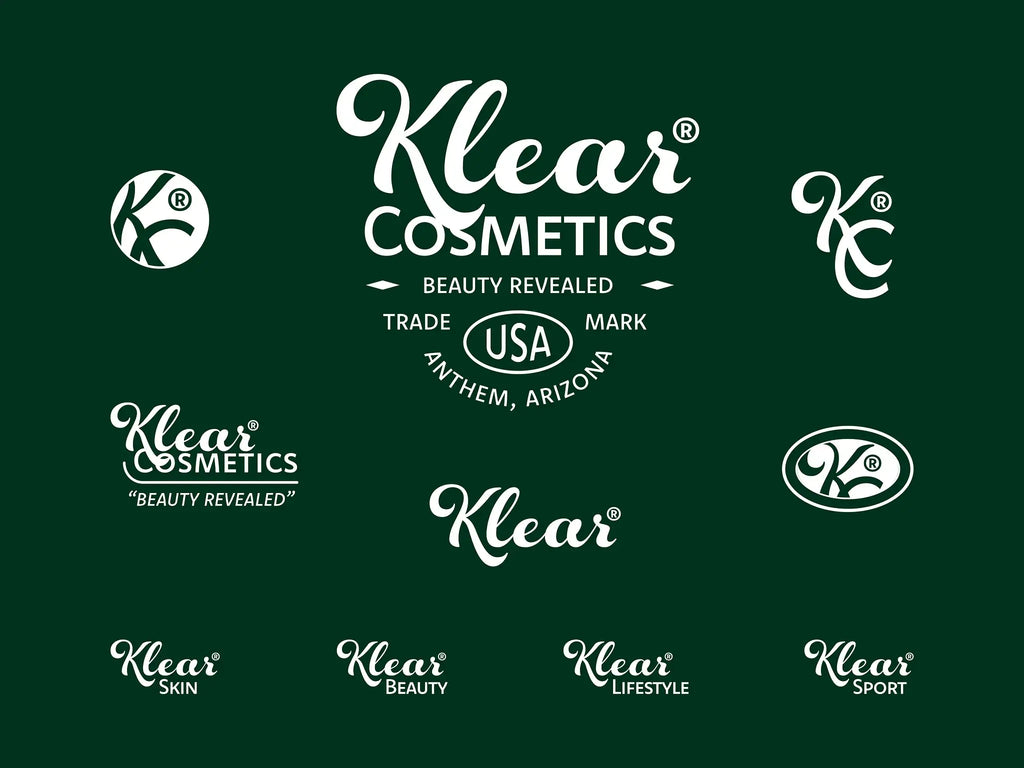Watermark Logo Design Variations: Subtle Branding in Imagery

Source: Kallie Goetz, Christy Frank Photography Logo Variations - Brand Identity, Dribbble, https://dribbble.com/shots/18784900-Christy-Frank-Photography-Logo-Variations-Brand-Identity
Branding is a critical component that helps businesses and creators differentiate themselves while protecting their assets. One effective strategy is the use of watermark logo design variations, which allow for subtle yet powerful branding across various types of imagery. A watermark logo is typically a semi-transparent mark embedded into photographs, videos, or other digital content, serving both as a deterrent against unauthorized use and as a method of brand promotion.
The art of creating the perfect watermark logo involves a blend of aesthetic appeal and functionality. It should be distinct enough to be recognizable but subtle enough not to disrupt the viewer's experience of the image. This balance ensures that the logo serves its protective purpose without detracting from the content's value.
The following sections will explore key considerations in designing watermark logos, from choosing the right transparency and placement to selecting designs that resonate with brand identity. By mastering these variations, designers can create effective watermarks that enhance brand visibility and content security simultaneously.
Transparency Is Key
In watermark logo design variations, transparency is not merely a design choice but a strategic necessity. The primary goal of a watermark is to identify ownership and deter piracy while maintaining the integrity of the original image. Achieving the right level of transparency ensures that the watermark is visible without being intrusive. A watermark that is too opaque can overshadow the content, distracting viewers and detracting from the aesthetic quality of the image. Conversely, a watermark that is too transparent may fail to serve its purpose as a protective branding tool.
Designers must carefully adjust the opacity settings to strike a balance that aligns with the content's context and the brand's visibility needs. Typically, a watermark should be subtle enough to blend into the background when not looked for, yet apparent enough when sought. This subtlety in design helps maintain the viewer’s focus on the content while subtly embedding the brand's presence. Effective use of transparency in watermark logo design variations not only protects the content but also enhances brand recall every time the image is viewed.
Minimalistic Design
The principle of minimalism plays a crucial role in the effectiveness of watermark logo design variations. A minimalist approach to watermark design focuses on simplicity and clarity, which helps in creating a logo that is both functional and non-disruptive. This approach involves using clean, uncluttered lines and limited color palettes to ensure that the watermark complements rather than competes with the image.
Minimalistic watermarks are particularly effective because they are easier to integrate across diverse visual contents without overwhelming them. They adapt well to different scales and formats, from large-format prints to small digital thumbnails, maintaining their legibility and integrity. The minimalist design also allows for greater flexibility in opacity adjustments, making it easier to achieve the ideal balance between visibility and subtlety.
This strategy ensures that the watermark is recognizable and effective in reinforcing the brand without drawing undue attention away from the primary content. Thus, minimalistic design in watermark logos not only enhances the visual cleanliness of the image but also ensures that the brand's identity is seamlessly and effectively woven into various media.
Color Considerations
Color plays a pivotal role in the design of watermark logo variations. Selecting the right colors for your watermark is essential to ensure that it is both visible and harmonious with the content it marks. The choice of color should consider the typical backgrounds on which the logo will appear, aiming for a contrast that ensures visibility without overpowering the image.
Neutral shades such as black, white, or grayscale are commonly used because they maintain visibility across a wide range of background colors. However, when a brand's identity includes specific colors, these can be subtly incorporated into the watermark. It is crucial to adjust the saturation and brightness to ensure that the watermark does not detract from the image. The opacity can be tuned to allow the watermark to blend smoothly with different backgrounds, enhancing adaptability.
Moreover, designers should test watermarks in various color scenarios to ensure consistency and effectiveness across multiple applications. This testing phase is vital to ascertain that the watermark remains a consistent part of the brand’s visual identity, regardless of the underlying image colors. Effective use of color in watermark logo design variations ensures that the mark is an integral, yet unobtrusive, part of the visual content.

Source: Rob Batorski, Klear Cosmetics, Dribbble, https://dribbble.com/shots/23078666-Klear-Cosmetics
Placement Strategies
The strategic placement of a watermark is critical to its effectiveness and its ability to protect and promote the brand without interfering with the image's visual appeal. The ideal placement of a watermark depends on the composition and purpose of the image. Commonly, watermarks are placed in lower corners or along the edges where they are less likely to disrupt key elements of the image.
However, the placement should also consider the ease with which a watermark can be removed or cropped out. Placing the watermark in a slightly more integrated position within the image can reduce the risk of unauthorized removal. For example, incorporating the watermark subtly near central elements or across a detail that discourages cropping can enhance protection.
Designers must also consider the adaptability of placement across different media formats and sizes. A watermark that works well on a full-size image might not be suitable when the image is resized or reformatted. It’s important to develop watermark logo design variations that are flexible enough to maintain placement integrity across all formats, ensuring the logo's visibility and effectiveness without compromising the content's integrity.
This strategic placement reinforces the brand's presence subtly yet significantly, safeguarding the creator's intellectual property while maintaining aesthetic quality.
Scaling and Sizing
When designing watermark logo variations, proper scaling and sizing are fundamental to maintain legibility and effectiveness across all uses. A watermark must be versatile enough to be clearly visible on large formats like billboards and subtle enough not to intrude on small formats like thumbnails. Achieving this balance requires careful consideration of the logo's dimensions relative to the medium it marks.
Designers should create scalable vector files for watermarks to ensure that the logo maintains its clarity and proportion at any size. This scalability prevents the logo from becoming pixelated or distorted when adjusted to fit different formats. The key is to determine the minimal size at which the logo remains recognizable and the maximum size at which it remains unobtrusive.
Additionally, it is crucial to test how the watermark behaves in various sizes and on different media. This testing can help identify the optimal default size for the watermark, which can then be adjusted as needed for specific applications. Remember, the goal of a watermark is to protect the content without distracting from it, so the size must be enough to be noticed but not so large as to dominate the visual space.
Choosing the Right Font
Selecting the right font for watermark logo design variations is crucial as it influences both the legibility and the aesthetic alignment with the brand’s identity. The font chosen must ensure that the watermark is readable at various sizes and levels of transparency, without compromising on style.
A good practice is to opt for sans-serif fonts, which are generally cleaner and more readable in reduced sizes and lower opacities typical of watermarks. These fonts display well against a variety of backgrounds, making them a versatile choice for universal application. However, if a brand's identity is closely tied to a specific font style, that characteristic should be incorporated, albeit in a simplified form to maintain visibility.
The thickness of the font also plays a vital role; too thin, and the watermark may become illegible when scaled down, too bold, and it could overwhelm the image. Testing different font weights can provide a balanced solution that maintains both visibility and subtlety. Always ensure that the typeface aligns with the overall branding strategy to reinforce the brand consistently across all visual communications, ensuring that the watermark serves its dual purpose of branding and protection effectively.
Opacity Levels
The manipulation of opacity levels is a critical factor in the design of watermark logo variations. The right opacity level ensures that the watermark is visible enough to fulfill its purpose of branding and protection, yet subtle enough not to interfere with the aesthetics of the underlying image. Generally, a watermark should not be more prominent than necessary, as it can detract from the content it is meant to safeguard.
Opacity settings between 10% to 50% are most common, allowing the watermark to remain discreet while still being detectable. The exact level can depend on several factors, including the complexity and color of the background image and the primary purpose of the watermark. For instance, images intended for public view and high distribution might warrant a slightly more visible watermark to prevent unauthorized use, while those for private presentations can have more transparent markings.
Designers must experiment with different opacity levels to find the sweet spot where the watermark is neither too intrusive nor too easily overlooked. This involves testing the watermark across a range of different images, including those with both light and dark backgrounds, to ensure versatility and effectiveness under various visual conditions. Mastery of opacity settings allows the designer to enhance brand presence subtly and protect content without compromising on quality.

Source: Rob Batorski, The Delphi Symposium, Dribbble, https://dribbble.com/shots/3960010-The-Delphi-Symposium
Testing Different Variations
Testing different variations of watermark logos is essential to achieving an optimal design that effectively balances brand visibility with content integrity. This process involves experimenting with multiple design elements, including font, color, placement, size, and opacity, to determine which combinations work best across a wide range of media and content types.
Creating several variations allows designers to see how each watermark behaves under different conditions, such as on varied background colors, over busy or minimal images, and in various sizes from large prints to small digital thumbnails. Testing should also consider how watermarks are viewed on different devices and screens, as discrepancies in display technologies can affect visibility and appearance.
The goal of testing is to refine the watermark so that it is consistent with the brand's identity while ensuring it does not overpower the primary message of the content. Feedback from clients, colleagues, or focus groups can be invaluable in this phase, providing external perspectives on visibility and intrusiveness. Additionally, using analytical tools to gauge the watermark's impact on image engagement can offer insights into how it influences viewer perceptions and behaviors.
Ultimately, thorough testing of watermark logo design variations leads to a more adaptable and universally applicable branding tool, tailored to meet both protective and promotional needs without compromising the aesthetic value of the content it marks.
Incorporating Brand Elements
Incorporating brand elements into watermark logo design variations is pivotal for maintaining a consistent brand identity across all forms of media. A well-designed watermark not only serves as a protective measure but also as a subtle brand ambassador. This means integrating key brand elements such as colors, fonts, and symbols that are identifiable with the brand into the watermark design.
To achieve this, designers must distill the brand's essence into a simple yet effective symbol that can be easily recognized even when minimally presented. For example, a company's initials or a simplified version of the brand's logo can be used. The choice of colors should reflect the brand's palette, albeit in a subdued tone that complements rather than competes with the image content.
Furthermore, it's essential to consider the emotional impact of the brand's elements. The design should evoke the right feelings and associations that align with the brand's messaging, ensuring that every instance of the watermark reinforces the brand's market position. Designers should also ensure that these elements are versatile enough to be legible and aesthetically pleasing across various backgrounds and textures.
Adaptability Across Media
Ensuring the adaptability of watermark logo design variations across different media types is crucial for maintaining brand consistency and recognition. Watermarks must be versatile enough to appear effectively on diverse platforms, from digital images and videos to printed materials. This requires a design that is flexible in size, color, and placement, maintaining its integrity and purpose across various applications.
To achieve such adaptability, designers should consider the end-use of the content. For instance, a watermark for digital photos might need to be more discreet compared to one used in video content where it might need to be more prominent to remain visible. Similarly, the scalability of the design ensures that the watermark can be resized without loss of detail or legibility, whether it appears on a large billboard or a small smartphone screen.
The design process should include testing the watermark in multiple formats to ensure it performs well in different environments. This testing should account for different background complexities and color schemes to guarantee the watermark's visibility and effectiveness without detracting from the content.
Conclusion
Mastering watermark logo design variations is essential for any brand seeking to protect and promote its visual content effectively. By carefully considering factors such as opacity, color, placement, and brand elements, designers can create watermarks that enhance brand recognition without compromising the aesthetics of the underlying media. Whether adapting to digital platforms or printed formats, the right watermark serves as a subtle yet powerful branding tool. Embracing these design principles ensures that every piece of content not only carries the brand's signature but also reinforces its identity across diverse media landscapes.
Let Us Know What You Think!
Every information you read here are written and curated by Kreafolk's team, carefully pieced together with our creative community in mind. Did you enjoy our contents? Leave a comment below and share your thoughts. Cheers to more creative articles and inspirations!















Leave a Comment